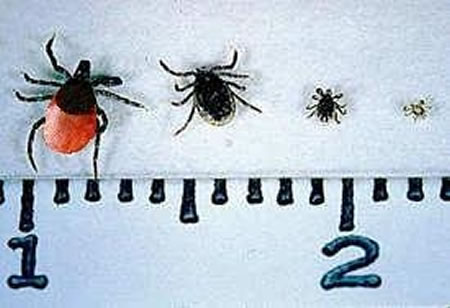As we’re often out enjoying the fresh air and scenery we thought we should include some information raising members’ awareness about ticks and the diseases they carry as there’s a good chance you’ll come across the bugs at some point, whether mountain biking or not.
To help with this we’ve pulled information from Lyme Disease UK – an organisation that raises awareness of ticks and Lyme Disease in the UK. Here’s some of their information and links to further reading:
What is a tick?
Ticks are parasites which feed on the blood of lots of types of animals and sometimes people. Ticks do not have wings to fly. They also cannot jump. They travel by walking on the ground and up plants, or are transported by birds and animals. Then they wait for a host (an animal or person) to pass by. When the host comes near, they drop onto it or hook onto it with special hooks on their legs. Some types of tick live in the burrows or nests of animals and birds.
Where Do Ticks Live?
Ticks are usually found in long grass, leaf litter and on low plants (eg. bracken, heather) where they wait for a host. They climb on as people or animals brush past, then look for a safe place to feed. There are usually more ticks in woodland and forest areas, but they can also be found in fields and parkland, especially where there are livestock and deer. However, ticks can also be present in town parks and gardens.
Ticks are more abundant in late spring and early summer and again during autumn. However, they can be active all year round during milder weather (above 3.5 deg C).
Risks To Humans:
Ticks normally choose wildlife and farm livestock to be their hosts. However, people and pets send out the same signals as the tick’s usual hosts. These signals come from body heat and the breath and skin of the host. The tick recognises these signals and thinks that we, or our pets, will be a suitable meal. We are just in the wrong place at the wrong time.
Some ticks can carry organisms in their saliva. When they bite, the saliva can enter the bloodstream of the host and this can make them ill.
Because winters are warmer, and because there have been changes in farming methods, as well as other factors, there are more ticks about. Ticks are also spreading into new places where they weren’t found before. Because of this, and because more people tend to be involved in outdoor activities, a greater number of people get bitten by ticks. This means that more people get diseases from the ticks.
Diseases passed on by ticks are called tick-borne diseases. The most common tick-borne disease to affect people in the UK and Ireland is Borreliosis, which is also called Lyme borreliosis or Lyme disease.
Signs & Symptoms Of Lyme Disease:
The most common sign of Lyme disease is an expanding rash called and Erythema Migrans (EM), which can grow up to 75cm in diameter if left untreated. The rash can resemble a bull’s eye (round and with a central clearing), or it can appear more irregular. Multiple rashes can sometimes occur and in some cases a rash is never observed, or it may be found hidden under hair.
Other symptoms can include fever, headache, chills muscle and joint aches and extreme fatigue. If left untreated, the infection can progress and result in much more serious complications including skin lesions, heart abnormalities and neurological symptoms. Such an infection is referred to as neuroborreliosis and can result in tingling, pain or an altered/loss of sensation and visual problems. Facial paralysis may also occur and in severe cases paralysis of the limbs.
Protection:
Currently there are no vaccines to defend against tick-borne disease in the UK and Ireland. Therefore, the best defence is to not get bitten.
- Know where to expect ticks
- Use a repellent
- Tuck your trouser legs into your socks or wear gaiters (more applicable to hill walking)
- Check your body for ticks after being outdoors
- Don’t bring ticks home – check clothing and pets to avoid bringing them inside
- Carefully remove the tick, if you find one – see below for tick removal advice
- Protects your pets – talk to your vet about tick treatments
The following links are to pages which offer further advice for defence.
Be Tick Aware & Stay Safe!







